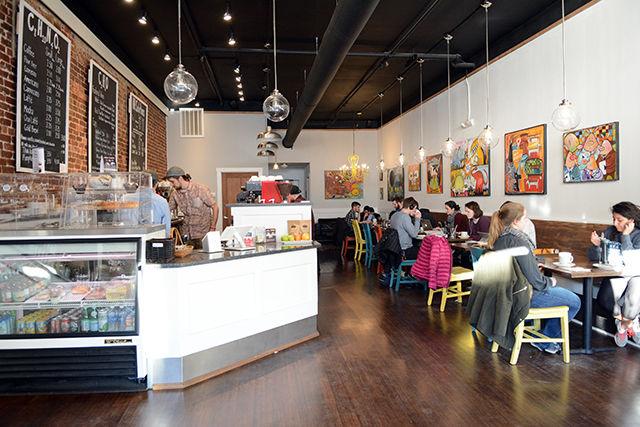On Hillsborough Street, newer projects seem to tower over even the most architecturally distinctive buildings. Amid flashier developments, even small businesses could use a facelift. With the help of a façade grant from the City of Raleigh, a facelift for eligible Raleigh businesses may soon be able to help update their curb appeal.
While the grant won’t necessarily help the newer additions, storefronts affected by years of natural exposure or neglect could potentially benefit from the opportunity.
The program targets local business owners, preferably ones in need of exterior developments. The grants serve as catalysts for renovations, including locations such as Hillsborough Street and Fayetteville Street.
“It’s an excellent program and it certainly helps small, independent business owners to do work that might not otherwise be affordable,” said Jeff Murison, executive director of Hillsborough Street Community Service Corporation. “On a street like Hillsborough that has a lot of independent businesses, it can be really powerful.”
The grant started in the 1980s and has freshened around 120 businesses since. The city budgets $50,000 annually for the program, contributing nearly $1 million to local businesses thus far. Recipients of the grant include City Market, Boulted Bread and The Raleigh Times Bar.
On Hillsborough Street, Liquid State, a coffee, beer and wine bar, was preliminarily approved for the grant. For owner Sy Sourisak, it was crucial that the renovations kept the charm of the building from 1904.
“A lot of people that have lived in the Raleigh area for a long time have been appreciative of the efforts put in to remake the façade,” Sourisak said. “Before we started work, it didn’t look inviting, it was very closed in. We also made the door handicap accessible.”
By revitalizing façades through the use of awnings, paint, signage and other aesthetics, the program attracts passersby. In addition to expanding the area from two square miles to 50 square miles, the grants will now fund murals and art for a business’s facades. The rehabilitation service is available on a first-come, first-serve basis and encourages economic development in areas that need it.
Eligibility is contingent on several factors. For example, buildings must be at least 10-years-old and the proposed renovations must comply with policies, guidelines and city codes. If the building is a historical landmark or sits in a historic district, it will need the approval of Raleigh Historic District Commission, according to the City of Raleigh website.
The project has been in dormancy stage, according to Murison. Currently, the city is refunding and reauthorizing the program. According to Beth Nooe, urban designer for the City of Raleigh, it looks promising that the revised program will be implemented.
In 2013, the Pedestrian Business Overlay Districts, PBOD, codes did not have specific districts, mainly serving as a means for increasing residential density in commercial areas, such as Cameron Village, according to Dhanya Purushothaman-Sandeep, urban planner and designer for the City of Raleigh. With the development of the Unified Development Ordinance, UDO, hybrid code, eligibility prerequisites are less ambiguous.
“The program has encompassed some of the PBOD based in Raleigh, but with the new code and adoption of the UDO remapping, those PBODs went away,” Nooe said. “So we had to think differently on how to provide these eligible areas for applicants. We reevaluated the need for the grant and looked at targeted economic areas.”
If approved, the façade grant will adopt the changes and a revised map. With the district clarifications, the boundaries within the economic development zones are broader, allowing more storeowners to take advantage of the opportunity. The City Council will reach a consensus on the matter in the upcoming month.
“It’s a great opportunity,” Purushothaman-Sandeep said. “It’s being only utilized by a few, but by opening it to areas in need and introducing the arts and mural aspect of it, it’s going to help a lot of people and there could be a demand for it.”








